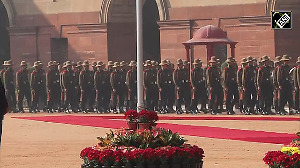When Rediff.com's Archana Masih and Rajesh Karkera set course from the foothills of the Himalayas to the Arabian Sea, they could not think of a better place to begin their journey than the stately campus that has given India some of its greatest military heroes.

Day 1: The Indian Military Academy, Dehradun, Uttarakhand
Their pictures line the walls, their statues grace its grounds, and every soldier who passes by, stops to salute their sacrifice at the quiet war memorial by the gate.
I don't know why, but looking at those military heroes and walking those grounds reminded me of what Winston Churchill once told a Victoria Cross winner who had come to see him during World War II.
'You must feel very humble and awkward in my presence,' Churchill said.
'Yes, sir,' replied the soldier.
'Then you can imagine how humble and awkward I feel in yours,' Churchill replied.
What Churchill said is exactly what one feels at the Indian Military Academy, Dehradun. The sacrifice of its men is so supreme that it makes one think about the insignificance of one's own life.
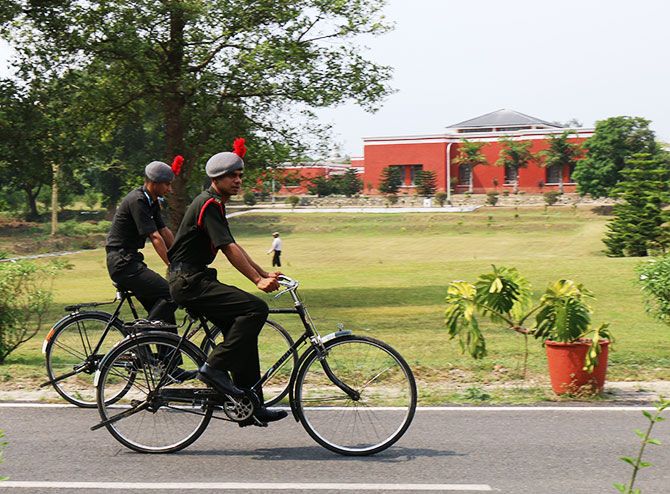
Our journey had actually begun the previous day, from Mumbai's Chhatrapati Shivaji International terminal.
The best part of the airport starts just as one turns into the elevated airport road with the impressive statute of Shivaji, the great Maratha warrior king. It is easily one of the best statues you will see. It is also a rare one where Shivaji is not astride a horse, but stands one arm on his waist, in a warrior stance.
Past this brilliant strategist of guerilla warfare, whose statue also adorns the National Defence Academy in Pune, we had made our way to the home of military leadership in Dehradun.
Beyond the imposing IMA gates, manned by tall soldiers with regal moustaches lay the portals from where India's brave have gone on to make innumerable sacrifices for the motherland.

"The entire IMA is a hall of fame and sacrifice. Wherever Gentlemen Cadets go, they move with these names. This environment breathes heroism and military history," says the senior-most officer at the academy, Major General Y S Mahiwal, the Officiating Commandant, who graduated from the Academy in 1979.
The IMA has battalions and companies named after battle heroes and decisive battles. It has grounds, auditoriums, gymnasiums, messes named after legendary soldiers who died in famous battles. It has guns and equipment that have served the country well -- it has a Patton tank captured from the Pakistan army.
On its staff is also Param Vir Chakra awardee, Naib Subedar Sanjay Kumar, bestowed the honour for his valour in the Kargil War.
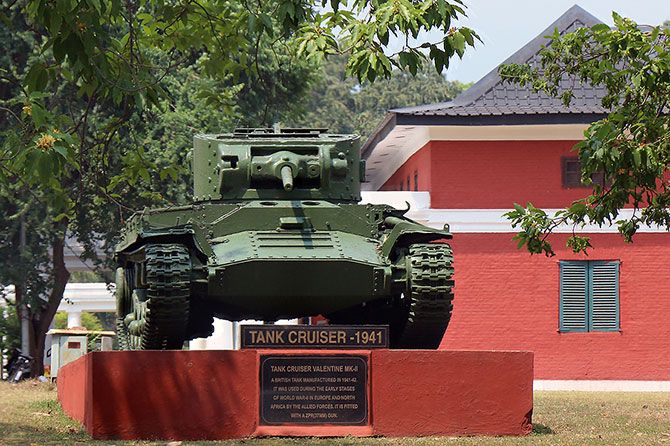
Next month, 610 Gentleman Cadets will participate in the passing out parade and join the Indian Army. It is, understandably, the high point of the IMA year and young cadets say they are excited about the big day.
I ask Major General Mahiwal, a veteran infantry officer, why young boys from the urban middle class or sons of officers are not joining the armed forces like they used to in the past, citing instances of former royals, and public school educated boys opting for a career in the army.
"My son is a fourth generation army officer," says the general, the pride in his voice making him look larger in his chair than his 6 foot frame. "The sons of two army commanders are cadets here and 15 per cent of the total passing out strength comes from an army background."
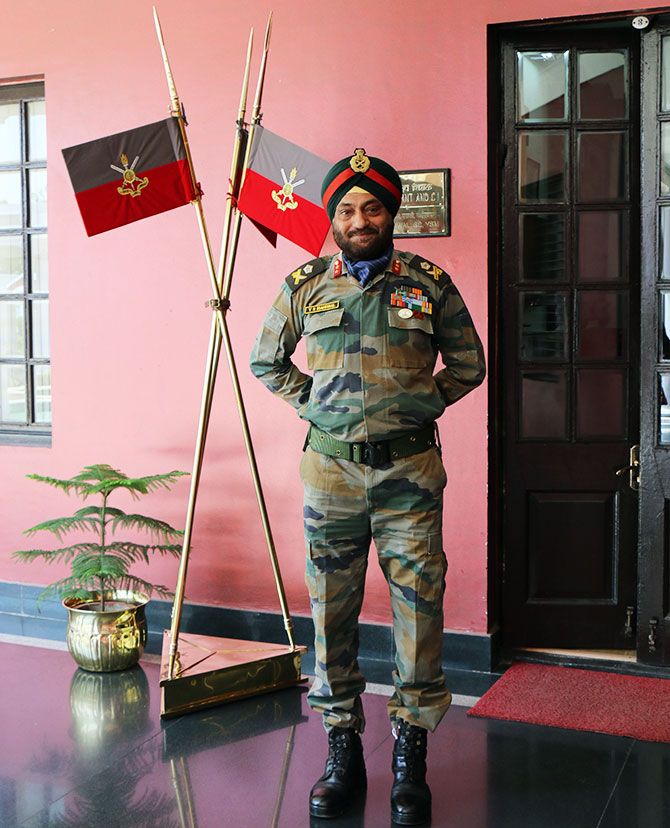
Among the five cadets that the Academy had selected for us to meet is Gentleman Cadet Bharat Sethi, 24, a graduate from Delhi's Hindu College who left McKinsey after seven months to join the IMA.
The son of a naval pilot, the articulate cadet says he left the corporate world because he realised that what he was doing was not tangible or real like what the Indian Army does.
"What we do in the army makes a difference to the men you command and to the nation. So there's a greater feeling of success," says Bharat, sitting in a room, the entrance to which is flanked by honour rolls of Gentlemen Cadets of the past.
The cadets had been summoned to Chetwode Building, the historic administrative block, named after the first commandant in 1932. Philip Chetwode also gave the IMA its motto taken from his inaugural address and which I had first seen as a plaque in Param Vir Chakra winner Vikram Batra's home in Palampur, Himachal Pradesh:
'The safety, honour and welfare of your country come first, always and every time. The honour, welfare and comfort of the men you command come next. Your own ease, comfort and safety come last, always and every time.'
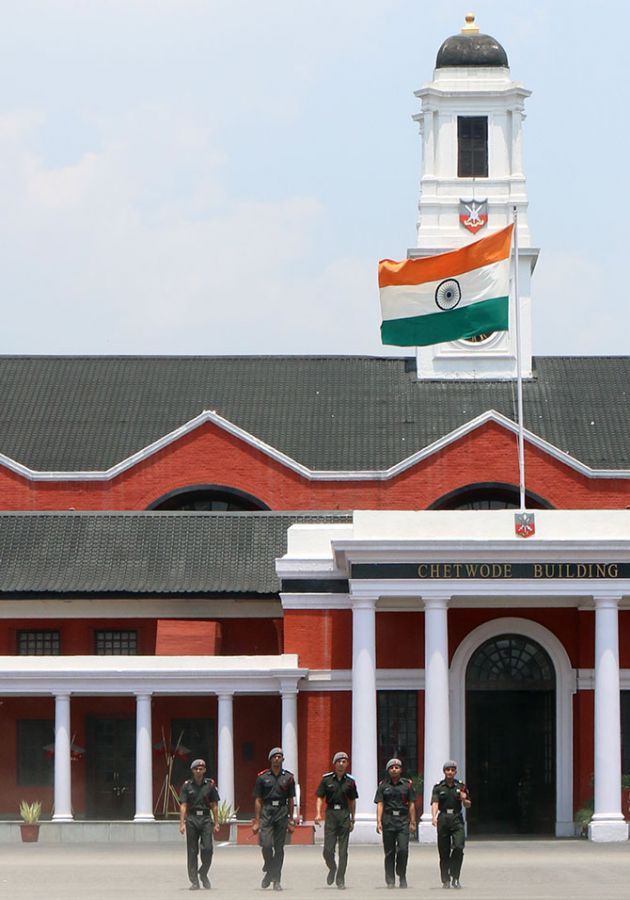
A common thread that runs through the conversations with the cadets (each conducted independently) is their commitment to earning the respect of the men they will go on to command in units across the country.
"What every cadet worries here is if we will be able to be like the heroes who adorn this academy... will we be able to lead our men like they did," says Junior Under Officer Anirudh Joshi, 23, when I ask him what are the thoughts criss-crossing his mind just weeks from graduating from the IMA.
The son of a colonel, the Almora boy is a great admirer of Major General Ian Cardozo, who amputated his own leg with a khukri after being wounded on the battlefront in the 1971 War.
"He cut his own leg and continued to serve till his retirement. What amazing guts!" exclaims Anirudh.
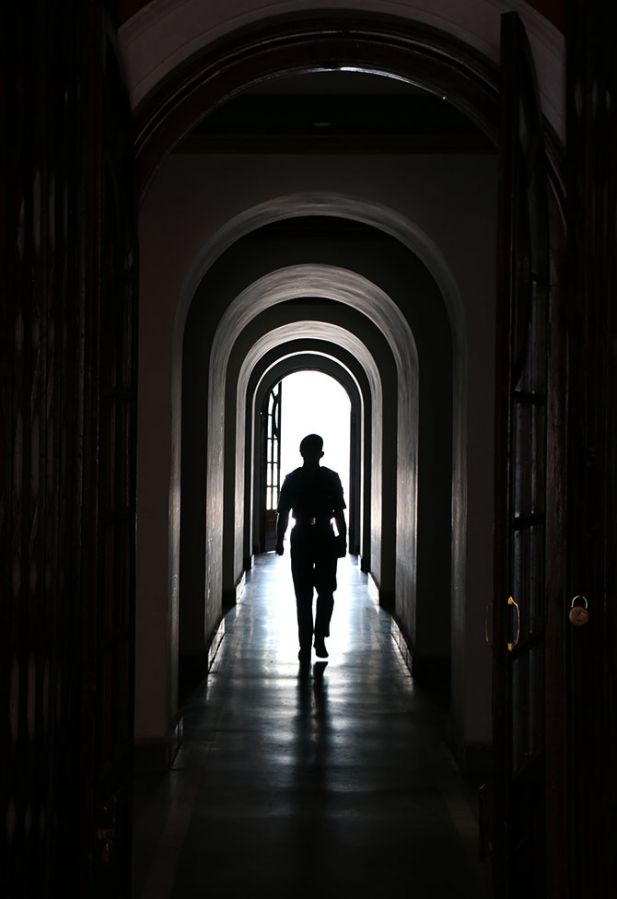
Between the ages of 21 and 24, the cadets look like school boys, but are armed with maturity and discipline well beyond their years. Their Instructor Colonel Sai Bhushan, who looks as physically fit as the cadets, says training is about all round development. From battle craft, field engineering, tactics, international relations, military technology to physical training, drill, games, etiquette -- the academy is a training ground for making an effective military leader.
"What I take away from here is character, commitment to my profession and loyalty to service," says Prashant Mishra, 22, from Lakhimpur Kheri in Uttar Pradesh.
"Whatever I am today -- the way I talk, walk -- has been given by the academy," says Prashant who who wants to join the Grenadiers regiment.
The son of a havaldar in the army, he says it was his father's dream that he became an officer. "The day I got selected to the NDA, my father's entire regiment celebrated," he says with a smile as he tells me about his father's three tenures in Jammu and Kashmir.
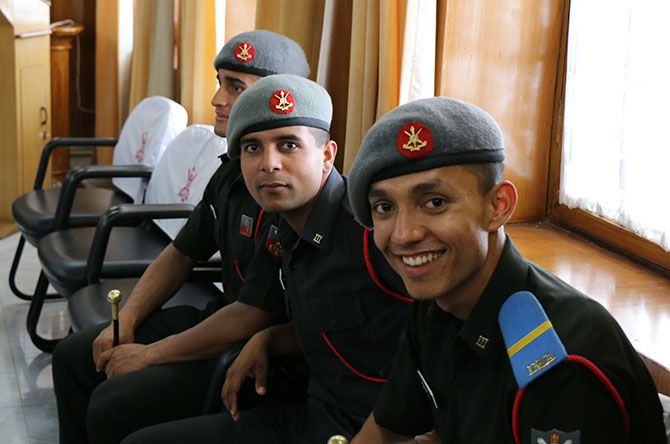
The academy is a microcosm of India, bringing boys from all kinds of backgrounds, where differences blur. What binds them is the soldier's brotherhood.
"We make strong bonds -- right from training to punishments to the performance of your company," says Senior Under Officer Nishant Philip, 21, who heads one of the 16 companies at IMA.
The cadets are divided into four training battalions, each battalion comprises four companies.
"The best thing is the uniformity you get which actually starts when you join the NDA. The first thing they do is give everyone the same haircut. Everyone looks the same, are issued the same clothes, eat the same food, do the same things -- it does not matter who you are, where you come from, what you do -- all are equal and you have to prove your mettle on the ground," says Nishant.
He joined the NDA at 17 and was the silver medalist in the overall order of merit when he graduated last May (after three years at the NDA, cadets slated to join the army, spend another year of training at the IMA).
A boarding school boy, the last army officer to graduate from his school was former army chief General Shankar Roychowdhury who retired in 1997.
It is close to lunch time and the cadets will cycle to the other side of the sprawling campus where the mess and living quarters are.
The mess -- like at the NDA -- has a small table where a meal is set every day for the soldier who did not return from the battlefield.
The mess is named after Captain Vikram Batra, the legendary hero of the Kargil War, and the adjacent hall is lined with portraits of IMA alumni, who made the supreme sacrifice for the nation.
I ask one of the highest ranking cadets at the academy, Academy Cadet Adjutant Rajendra Singh Bisht, 21, if he thought respect for the armed forces had diluted in the country.
"No, ma'am, I don't believe so," says Rajendra, the son of a civilian employee in the Indian Army and a bronze medalist at the NDA last year.
Born in Bareilly, home to the Jat Regimental Centre and reared in Ranikhet where the Kumaon Regimental Centre is headquartered, Rajendra grew up dreaming of a life in the army.
"I went to a Sainik School whose main aim is to send students to the NDA, but some students also clear the civil services or IIT. If a student who has joined IIT comes back to visit the school and at the same time a lieutenant or trainee cadet does the same -- the respect that a lieutenant gets cannot be compared to the IIT student," Rajendra adds.
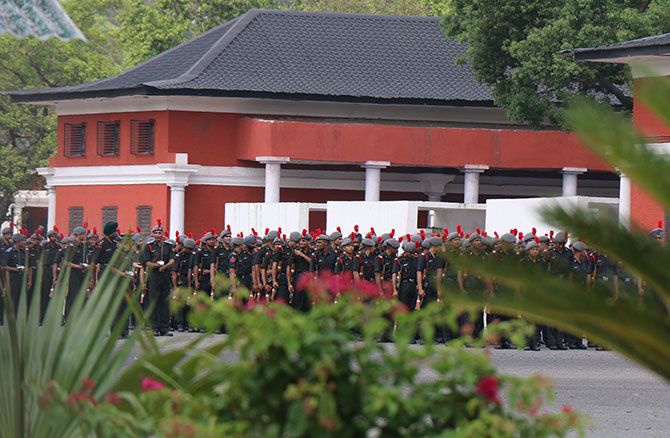
In less than two weeks, these young men will join the Indian Army and be deployed across this vast country.
Ask them and to the last man, they say they want to be deployed at the Line of Control, in the north-east or other theatres of likely conflict.
"Today when they pass out," says Major General Mahiwal, "they can handle a company size force even in low intensity conflict and can shoulder responsibilities that a company commander of 4 to 5 years of service is expected to perform."
"Soldiering is a difficult and different game," says the general who has a love of poetry. "A soldier has to be comfortable in Siachen, in being separated from family, in going to war."
"It has to be felt in your heart and that has been our strength so far."

When in Dehradun: Make it a point to see the majestic Forest Research Institute. It has one of the best colonial buildings you will ever see.
Visit the Mindroling Tibetan monastery in Clement Town to see the world's largest Stupa.
The rusks, cakes and namkeens from Dehra Dun's Ellora bakery make a nice takeaway.
Next stop: Why this girl in Ramgarh village will grow vegetables after her PhD.









